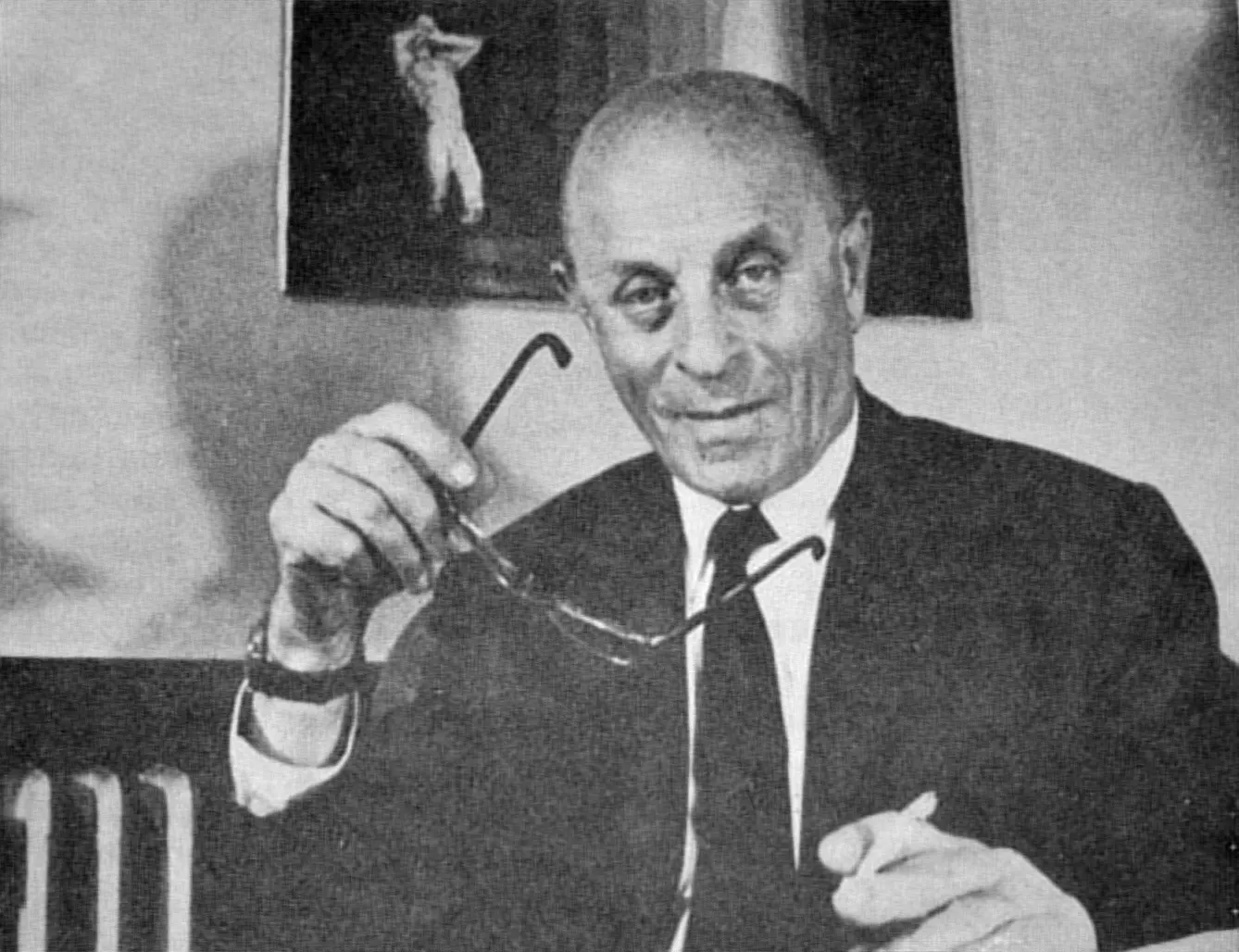The invention of the fountain pen was truly remarkable (and Romanian, as you can read here). However, it was not fault-free. The ink would not dry fast enough. You could smudge it with your hand. Or worse! You could ruin a neatly written (love) letter with an ugly inkblot… And we all know how it feels to re-write something you have already written once. László Bíró identified that market gap and found a suitable solution.
An observant journalist who hadn’t lost his marbles
A Hungarian-born journalist, László Bíró, is said to have been resigned to the fact that one of the main tools he used for work wasn’t flawless. Perhaps he ruined one too many of his white shirts when the ink leaked into his pocket. Or maybe he missed an important quote when his pen ran out mid-way during writing? There is no way to know.
What we do know is that one day he noticed that the ink used to print the papers dried faster than that in a fountain pen. So he decided to create a pen with similar ink. He asked his brother György, a chemist, for help, and together they began designing their new product. The main issue with the press ink was that it was much thicker and hence would not flow from the nibs available at the time. They didn’t move in the right way.
Then, one day, Bíró was watching schoolkids at a game of marbles. One of the spheres ran into a puddle, and as it rolled out of the water, it left a wet trail on the pavement. That there was the Newton apple moment – László found the solution to the problem. A pen where a rolling sphere would distribute ink. Soon his invention was ready. He first presented his ball pen (or biro, as it is known today among some native English speakers) during Budapest Fair in 1931 and patented it in 1938.


A story of much success…
The invention was an instant hit! Despite a hefty price tag, upon its release in the US in 1945, thousands of customers queued outside the stores to purchase this new must-have item. It is understandable once we realize the new ‘fountain pen’ was marketed as not needing a refill for up to 2 years. It also allowed people to write virtually anywhere, regardless of conditions. It could be hot, wet, windy – as long as your paper held it together – the biro was up for the job. Come to think of it – it could be compared to something close to a smartphone, but let’s not go there now.
Perhaps the British Air Force can serve as a good illustration of what a biro pen meant when it was invented. Fountain pens were not suitable for use by military aircraft pilots as they could not withstand changing pressure. Biro, on the other hand, could. It was reliable and durable. Therefore, in 1943, the Royal Air Force ordered 30,000 novel pens to equip their pilots, regardless of the fact they were costly (in today’s money, one biro cost the equivalent of over USD 180!) – that’s how groundbreaking the invention was.
… and drama
László managed to patent his invention in Hungary and Argentina. However, he never obtained a US patent. It doesn’t take a genius to realize hungry US business sharks were not going to miss out on such an opportunity. Just as two US companies were in the process of obtaining a license to sell the biro in the US market, Milton Reynolds, who was an American businessman, released his Reynolds Pen in 1945 (one that generated the same sudden “I must have that!” reaction from the crowds).
Reynolds introduced just enough changes to the original Bíró design to bypass the existing patents and avoid potential disputes. Other companies soon followed suit (some you may recognize – like Eversharp and Parker) and the market became saturated with pens no one was buying since you could buy a refill instead of an entire pen… once every two years. When Marcel Bich joined the race in the 1950s, he changed the rules – the ballpoint pen became less of a luxury product and more of an affordable, disposable solution to all. (Anyone who never owned a BIC cristal pen, raise your hand! Just as I thought – no hands in the air…)
The fantastic thing is that the inventor himself, László Bíró, was long out of the picture, having sold his shares in the Argentina-based company he created under the name Eterpen. Being of Jewish descent, he fled there to save his family from German persecution during the Second World War.
Many talents and (preposterous) accusations
Bíró will forever be known as the ballpen inventor. But, besides that, he was an extremely talented man. Before his career in journalism, he studied medicine but got side-tracked by the art of hypnosis. He also was a gifted sculptor and had some success as a surrealist painter. Before journalism, he worked as an insurance agent. From there, he moved on to become an employee of an oil company, which led him to establish a two-person team contracted by General Motors in pursuit of the invention of an automatic gearbox.
His daughter, Mariana, says he was fascinated with the life of ants and could watch them for hours. She now runs a foundation to commemorate her father and promote innovations and education. Every year on his birthday (September 29), Argentina holds Inventors’ Day, which was established in memory of László Bíró.
Still, voices were saying that the invention of the ballpoint pen was what killed the art of handwriting. According to Bíró’s accusers – the unnatural way of holding the ballpen meant hands would cramp, and the letters would get separated. Hence, in their eyes, the biro pen did not promote neat cursive writing. László Bíró was familiar with these accusations.
His daughter claims he would smile and say: “Well, writing comes from the heart. If we can help the hand perform the task, what is wrong with that?” Indeed. As long as our hearts are full, biros will help those words flow onto paper pages. And for up to two years without a refill.







